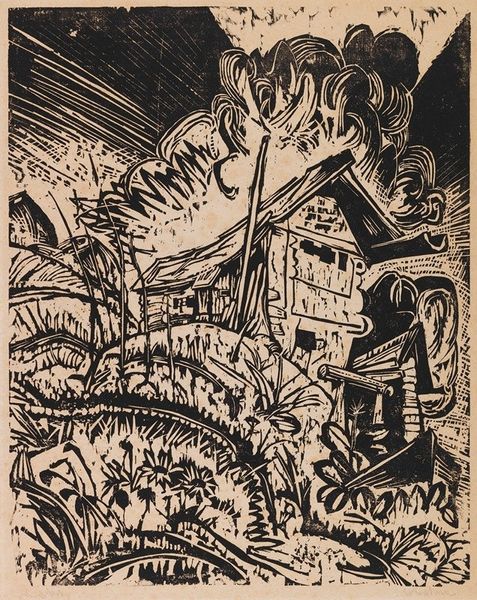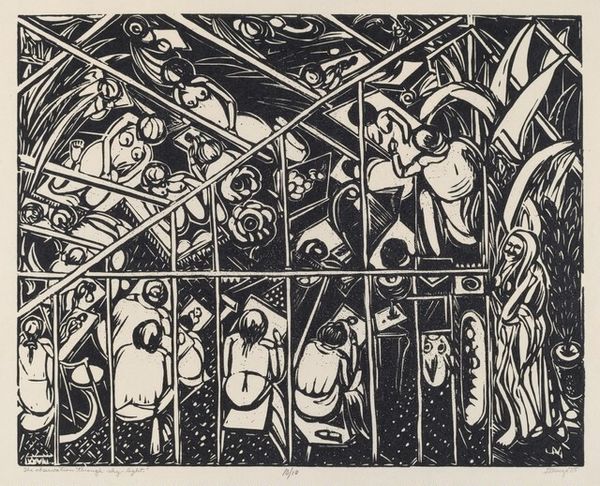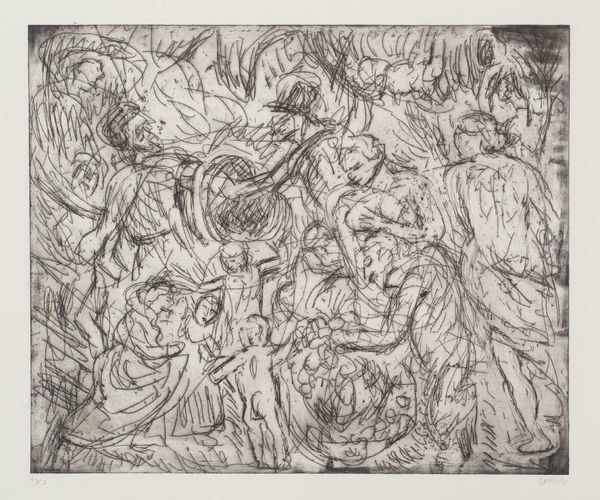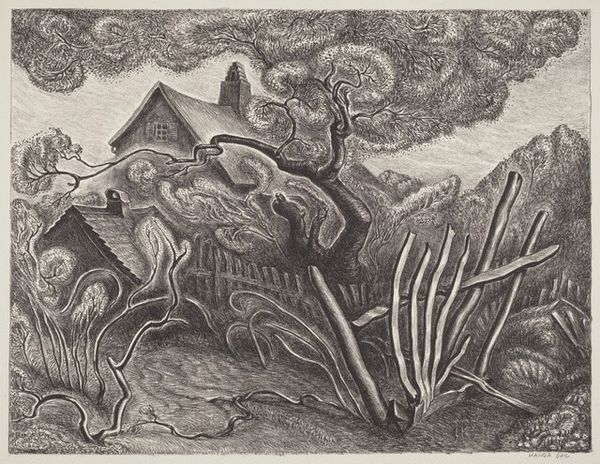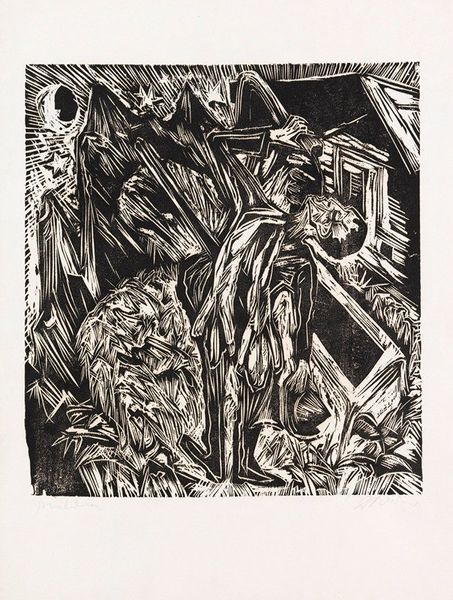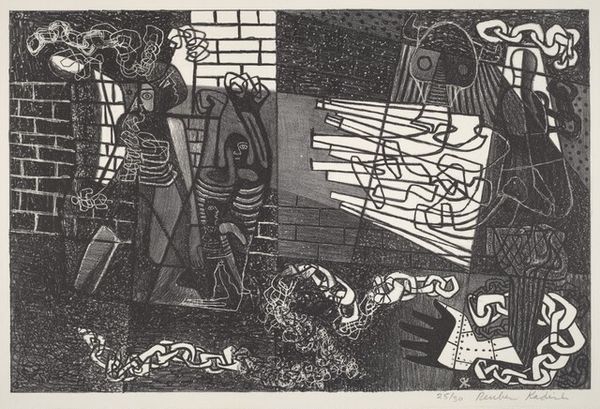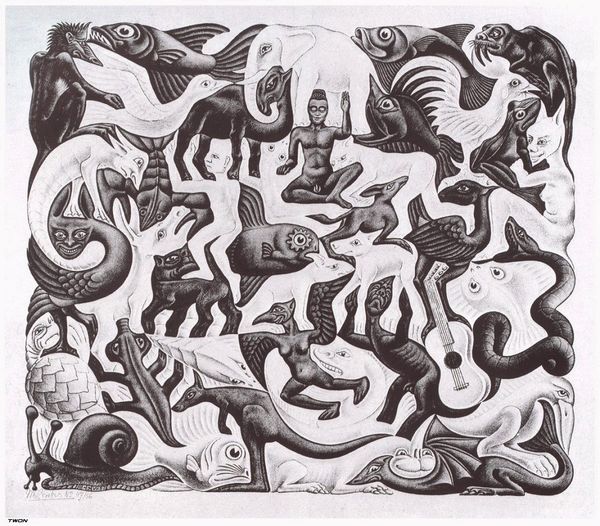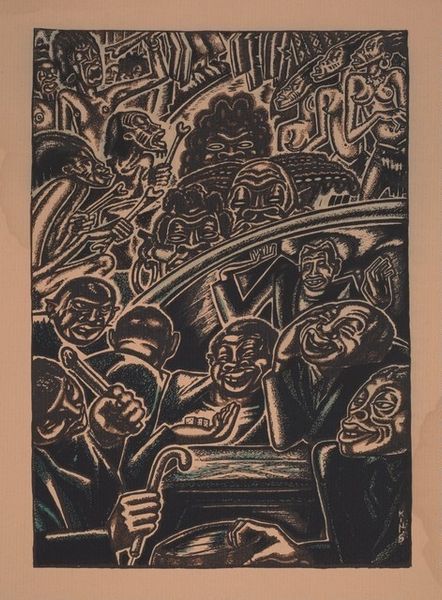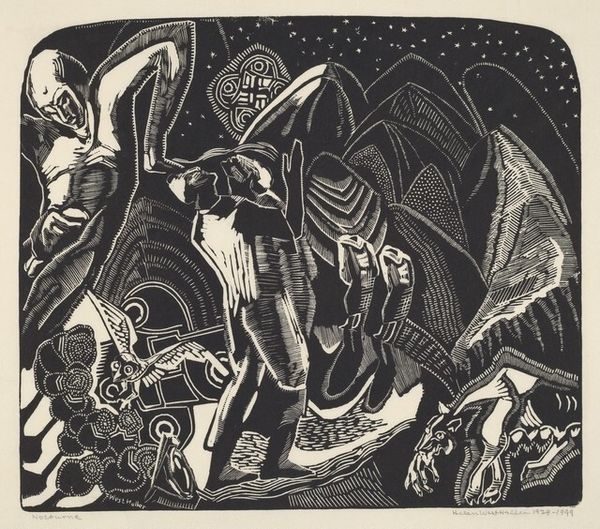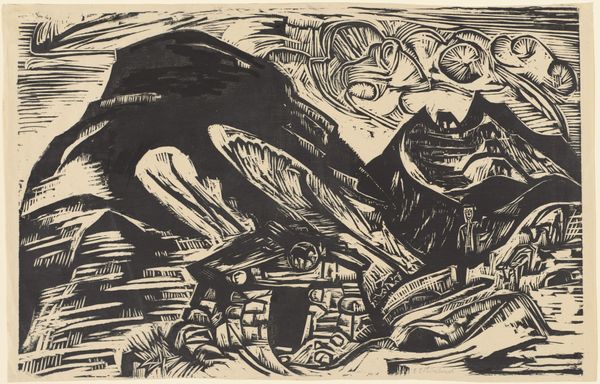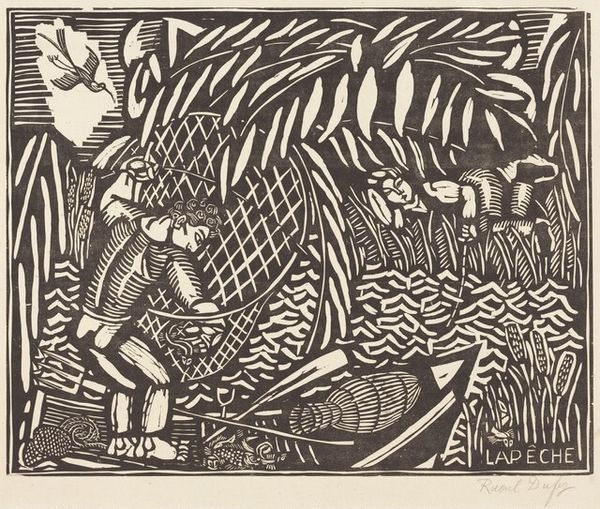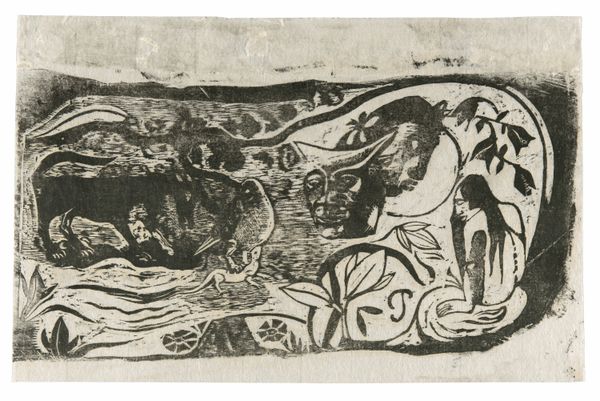
God Comes Down to Inspect His Creations c. late 1930s
0:00
0:00
Dimensions: image: 237 x 306 mm sheet: 278 x 400 mm
Copyright: National Gallery of Art: CC0 1.0
Curator: This unsettling woodcut print, titled "God Comes Down to Inspect His Creations," was created by Charles Frederick Surendorf around the late 1930s. Editor: My first reaction is a kind of horrified fascination. There's a disturbing energy in the distorted figures and stark contrast. The density of the composition overwhelms. What is this supposed to signify? Curator: The formal choices Surendorf made contribute to that reaction. Notice the heavy use of black and white to generate strong tonal contrast. It lends the image a high-drama aesthetic. The density is achieved through intricate mark-making that creates distinct areas of texture and rhythm. Editor: Agreed, it’s visually arresting, but considering the date, I see this as a scathing commentary on the rise of totalitarianism and impending war. The grotesque figures, the fallen buildings, the implication of violence. Is it a critique of institutionalized power and how so-called leaders can cause such chaos? Curator: It could be. However, formally, observe the layering and interplay between these exaggerated forms and how they draw your eye across the entire composition. This invites one to interpret a chaotic yet balanced scene—suggestive of divine observation perhaps? I am mostly drawn to how effectively Surendorf employed the woodcut technique. Editor: But surely the "God" figure, with its hands covering its ears, implies a kind of…disgust, maybe? A refusal to listen? It's difficult to divorce that imagery from the sociopolitical landscape of the time. Perhaps Surendorf intended to challenge established religious narratives complicit in such times. Curator: True, however, the abstraction is intriguing. Consider that this work invites you to deconstruct its semiotics for possible symbolic implications. I see not only disgust, but also how Surendorf has crafted this face with layered and shadowed detail, adding great depth. Editor: Well, however we choose to decode this artwork, one thing is sure: Surendorf’s print powerfully reminds us that social reflection and analysis in times of tumult are both valid and necessary. Curator: Indeed. And from a formal perspective, its dynamic composition serves as an impactful case study in expressive visual language.
Comments
No comments
Be the first to comment and join the conversation on the ultimate creative platform.
